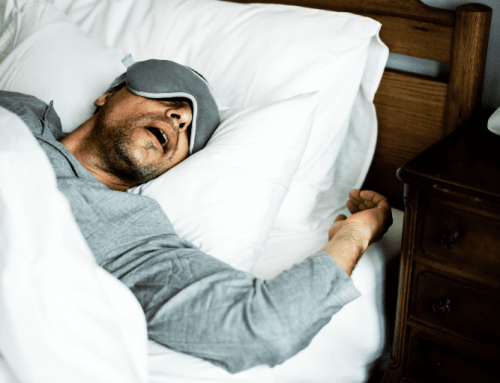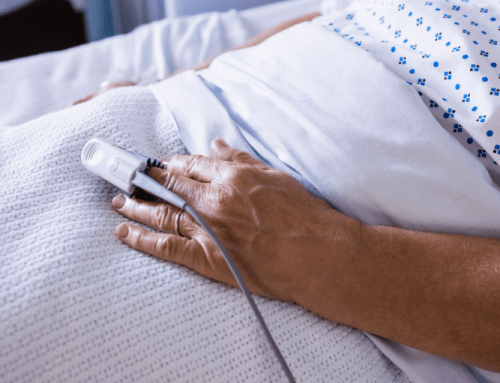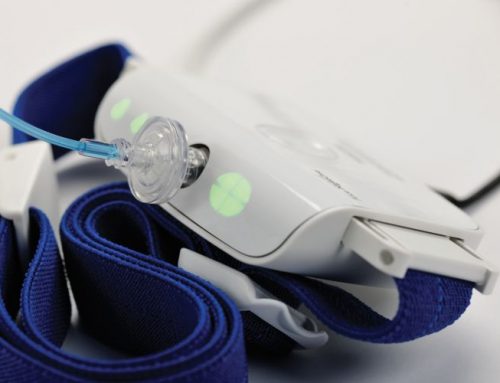What’s Involved in an Overnight Pulse Oximetry Test?
Many people struggle with sleep and don’t even realize or understand there could be an underlying cause. Sleep disorders have a variety of symptoms such as restlessness, headaches, lack of concentration, mood changes, daytime fatigue/drowsiness, snoring, and shortness of breath. While these symptoms are common in other conditions, it makes it difficult to conclude that a sleep disorder is to blame. Sleep disorders can result from various health conditions like sleep apnea, COPD, heart disease, asthma, and lung diseases. If any of these symptoms sound familiar, or you think you may suffer from a sleep disorder, then it is important to consult your physician to discuss the benefits of an overnight pulse oximetry test.
Pulse Oximetry
So, what is overnight pulse oximetry? Overnight pulse oximetry is a simple, non-invasive way to measure and record your oxygen saturation levels and heart rate while asleep. This test shows if an adequate amount of oxygen is circulating throughout the body during sleep. A pulse oximeter device is placed on the index finger and is connected to a small device by a wire that will record data overnight. The pulse oximeter operates by emitting an infrared light that shines through the tip of the finger and measures the oxygen content by detecting how much light reflects off the gases in the blood. Normal blood oxygen levels range from 90% to 100%. However, if oxygen levels fall below 88%, it is considered abnormal. When this occurs, it is referred to as a “desaturation” event, which means that there is not enough oxygen circulating in the blood and may indicate the need for supplemental oxygen or other types of treatment.
Vitalistics’ Overnight Pulse Oximetry Process
If you believe you are at risk for a sleep disorder, it is important to discuss your symptoms with your physician, but you can start by taking Vitalistics’ pre-screening assessment. This assessment will give you an idea if you could be at risk for sleep apnea or another sleep disorder. If the pre-screening sleep assessment indicates any signs of a sleep problem, then you will be prompted to take a more comprehensive sleep assessment that is designed to identify more than 40 potential causes of sleep disturbances. Once you receive the assessment results, you can take them with you to your physician to see if an overnight pulse oximetry test would be beneficial. If they believe you may be suffering from a sleep disorder, your physician will order the test from Vitalistics, and the oximeter will be sent directly to your home to be completed at your convenience. Detailed instructions are provided so you can set up and perform the test correctly. You will want to make sure you are in your typical sleep environment, or where you are most comfortable, for the most accurate results. The next day the pulse oximeter should be returned with the provided return label to Vitalistics to process the results. Once the data is uploaded, a report is sent to your physician for review. They will then contact you with the results and provide any follow-up recommendations, such as home oxygen therapy or further testing with a home sleep test.
Results
One the device is returned, the information gathered from the pulse oximeter is downloaded, and a graph is generated. This graph will show if any abnormal drops in oxygenation occur. As previously stated, a reading of 88% or lower is considered abnormal, and if oxygen levels remain low for some time, hypoxemia occurs, which can damage vital organs. After the information is processed, your physician will immediately receive a one-page comprehensive report for easy interpretation and quick diagnosis. They will also receive a detailed graphic report, desaturation events chart, and a saturation histogram. The detailed graphic report contains a summary of 4% desaturation events and provides visual graphs for clear understanding. The desaturation events chart is a report that shows how severe a drop in oxygen level was during a specific event. And finally, the saturation histogram contains a chart and graph of saturation levels for the total time of testing; this makes it easy for both patients and physicians to understand results.
After the Test
Once your physician reviews the results, they will determine the best course of treatment necessary to get you sleeping better, including the need for home oxygen therapy or additional testing to diagnose diseases, such as obstructive sleep apnea (OSA). While overnight pulse oximetry testing does not provide enough information to adequately diagnose OSA, it is usually the first step in determining whether a home sleep test or in-lab sleep test is needed.
This test’s simplicity and convenience make it easy for patients to perform the test at home in the comfort of their own bed. Overnight pulse oximetry is beneficial to anyone with a history of smoking, chronic bronchitis, history of pneumonia, asthma, COPD, suspected sleep apnea, or any individual that suspects they have sleep disturbances due to any sleep or breathing disorder. Don’t deprive yourself of much needed, precious sleep. Get started with Vitalistics today!









